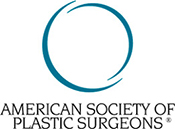Do’s and Don’ts of PRP Hair Restoration
PRP hair restoration is one of the leading forms of hair replacement available today. By infusing the scalp with powerful, potent growth factors, PRP injections can help revitalize the hair follicles, optimizing them for enhanced growth.
How does PRP work?
PRP works in two distinct ways to trigger hair regeneration at the root. Growth factors in PRP can jumpstart the stem cells in the scalp, combating hair loss. PRP helps the body to reform new cells that can support hair renewal.
PRP treatments also offer patients a wide range of anti-inflammatory advantages. Chronic inflammation in the scalp is one of the primary factors that lead to hair shedding and thinning. PRP injections heal and soothe the scalp, paving the way for replenishment in areas of hair loss.
Do’s and don’ts prior to your PRP treatment
Taking certain steps prior to PRP injections can help increase the treatment’s efficacy and make the process more stress-free. Here are a few suggestions:
Drink some water and have a snack before your session
On the morning of your appointment, eat something solid and nutritious so that your body has the energy it needs to make the most of your PRP injections. Drink water several hours before you see your provider.
Steer clear of hair products and chemicals
Patients should arrive at their appointments with clean, dry hair that is free from any fragrances, products, creams, or gels. The hair cannot be washed until a few days after treatment, which allows the scalp ample time to rest and recuperate. Products could trigger inflammation, which may compromise the efficacy of PRP.
Avoid sunlight
The PRP treatment is predicated on its ability to reduce inflammation, stimulating the healing process and leading to new cell growth. The ultraviolet rays in sunlight can stifle this process by causing unwanted inflammation, resulting in pain and irritation.
The skin is more sensitive than usual in the days immediately following the treatment, meaning that staying out of the sun is virtual for protecting oneself from skin damage. If going outside is an absolute necessity, wearing a hat is beyond recommended.
Avoid exercise and all other activities that cause sweating
While it is a natural fluid of the body, sweat is inflammatory and can irritate the treated area. It is recommended that patients avoid any and all activities and environments that can cause perspiration. Spas or saunas are definitely on the no-go list, as they will expose the patient to humidity and extremely high temperatures.
Do not swim
This one should go without saying. The chemicals found in most swimming pools, such as chlorine, have been found to cause irritation and infections in the scalp. The bacteria in pools can also be problematic.
Rest and relax as much as possible
While patients need to take good care of their scalp after receiving treatment, they are not required to take leave from work or disrupt any of their daily activities. Patients can continue working and carrying out their regular responsibilities without fear. Nonetheless, physical activity must be avoided as much as possible.
Be patient
While it is an incredibly effective treatment, PRP therapy takes a bit of time to work. Staying patient and giving the treatment area time to fully heal is imperative. On average, patients require 4-6 treatments a month, as well as a maintenance treatment about twice a year.
What is the takeaway?
PRP has become renowned for its remarkable efficacy in addressing hair loss. Taking the right steps leading up to the procedure and afterward will ensure a speedy recovery with optimal results. As with any procedure, patients should seek out a highly skilled and experienced practitioner to ensure that they achieve satisfactory results.















